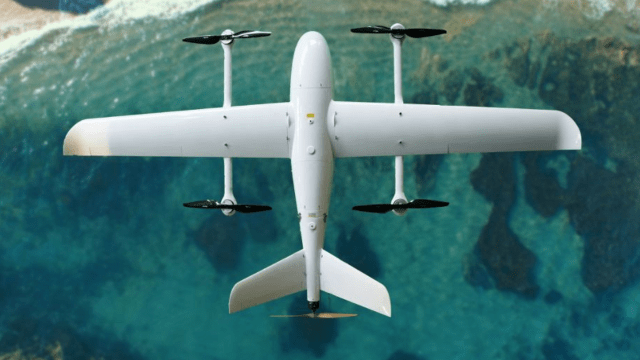Swinburne University in Melbourne is developing Australia’s first hydrogen-propelled drone, as part of a $1.3 million grant from the federal government’s Emerging Aviation Technology Partnerships program.
The idea is to create a hydrogen system for a large-scale drone to further develop zero emissions uncrewed air systems.
Hydrogen, a gas that doesn’t produce emissions when being used as a fuel, could be a great fuel source for unmanned vehicles. It could also lead to longer airtime for drones than if they were running on batteries and electricity. They’ve been deployed elsewhere in the world, but this is an Australian first.
The Hydrogen to the Skies project (H22S) will be conducted by Swinburne University’s Aerostructures Innovation Research Hub (AIR Hub), and is an extension of the hub’s focus on hydrogen aircraft development.
“With long range, zero carbon emissions and a low noise footprint, hydrogen-powered air vehicles represent the future of environmentally sustainable and socially responsible advanced air mobility,” the director of Swinburne’s AIR Hub Doctor Adriano Di Pietro said.
“We are proud to be putting Australia at the cutting edge of this rapidly growing industry and improving outcomes for regional and remote communities across the country and the world.”
A big part of the project will be proving that it’s viable as a commercial fuel for unmanned aircraft, with the hope that it’ll lead to hydrogen-drone use in Australian businesses while assisting with the country’s efforts to decarbonise.
Right now in Australia, drones are mainly used in mining, surveying, photography, maritime industries, agriculture and tourism, so being able to add another clean fuel source into the mix could improve the climate footprints of businesses in these fields.
All of this said, hydrogen isn’t clean on its own; if it’s being created with energy from the Australian grid, then fossil fuels are still being used. While it’s great to see researchers think of new and exciting ways to make hydrogen work, it’s important to highlight that hydrogen isn’t clean on its own.
“This next-generation green technology will not only help decarbonise Australia’s aviation industry but will also have positive effects for our regional communities, emergency services and advanced manufacturing sector,” Swinburne University’s deputy vice-chancellor Professor Karen Hapgood said.
“This funding will help grow Australia’s domestic clean aviation technology capabilities and ensure we can continue to create innovative technology for a better world.”
You can read about the hydrogen drone on the Swinburne University website.
